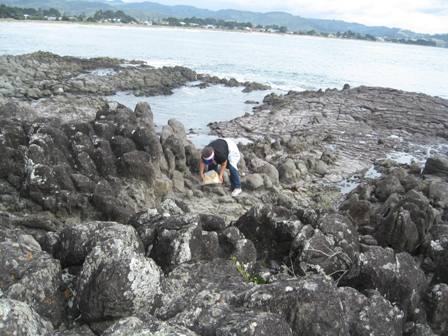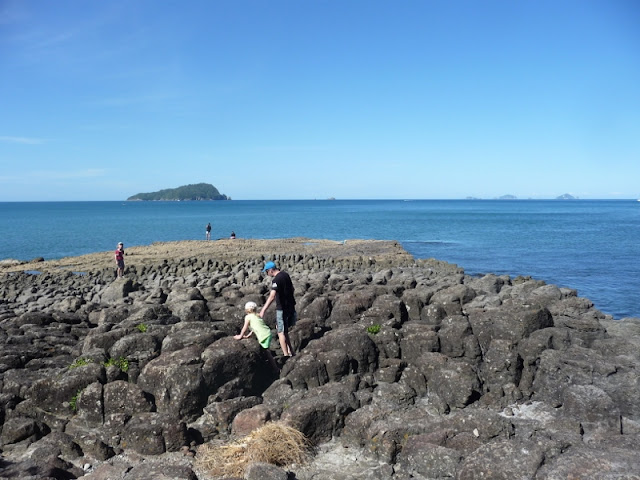Last year on ANZAC Day 2020, we were in COVID lockdown. Commemorations were at home. This year it was so good to be able to take part in the 2021 commemorations in our home place. Even more of a special treat, was an evening of music with an accompanying art exhibition, venue the Tairua Community Hall. Baroque music from Bach to the Beatles and beyond bought to Tairua by haumusiknz - well known musicians Rita Paczian ( mezzo and harpsichord ) and John Green ( baroque oboe).
The Art Exhibition was presented by the local Tairua Art Group, demonstrating the talent there is in this community. Typical of a small rural, coastal community, the evening event was well attended by a full house, with a standing ovation at the end. Certainly a befitting place to have such an evening – The Tairua Community Hall. Music from Bach and Handel filled the hall, paintings in the Art Exhibition could be enjoyed while the music flowed. Thoughts and energies turned to the events that have been held over the many years.
hausmusik.nz capturing the audience of Tairua residents - photo courtesy Chris Ball April 2021
Tairua Community Hall
A typical venue of New Zealand rural communities, “if the walls could talk” would be able to tell many family and community stories of gatherings in this place – concerts, balls, plays , dancing, music evenings, weddings, 21st birthdays, farewells to community residents.
This Tairua community hall opened in November 1932. It would appear that two events were significant for the Tairua people that occurred near to each other timewise. The first was an aeroplane visit to Tairua. Could be said to be a fore runner of aeroplane tourism in the Tairua Valley. The Thames Star wrote: -
“Many local residents, including Mrs Cory- Wright, Mrs Phelan, Mrs Heath, Miss C Heath, Miss T. Agnew, Miss Grey and Miss R Savage enjoyed flights.” (Thames Star, 29/11/1932)
The second event was the
opening of the Tairua Hall. Typical of rural events back then , people came
from the other surrounding places – Mercury Bay, Coroglen, Whenuakite and
Whangamata.
Looking back over various newspaper reports seems the building progress was quick. Following the laying of the first foundation stone. The Thames Star wrote:
“The
foundation stone of the Tairua ' Hall was duly laid by Mr Charles Oldham, the
oldest resident of Talrua, at 10 a.m. on Sunday, March 6, before a large and
representative gathering. The , hall will be4soft by 30ft, and will be equipped
with a stage, dressing rooms and all the necessary conveniences. Mr Webb is the
chief architect. A working bee is busy laying the foundation blocks, which were
donated by Mr Martin Hutchinson. Another working bee will fence in the site as
soon as possible, posts and strainers being . gratuitously supplied. Mr Cory-Wright
will saw the timber.” ( Thames Star, 12/03/1932 )
Typical of New Zealand rural communities – fund raising via stalls and concerts, working bees, labour contributed and donations of building materials has seen many community halls in New Zealand built and a testimony today of the input by many to give a building for the greater benefit of many.
 |
| Jamie playing piano - photo courtesy Chris Ball |
Certainly following the opening of the hall at the end of 1932, it became much used. Eight months later it was a Tairua school concert and dance. The Thames Star reported that :-
" Among those present were: Mesdames Nicol, Cory Wright, Phelan, Sheppard, Sylvia, Hazeldene, H.McGregor, G. McGregor, Agnew, Kreamer,. E. Hutchinson, W. Hutchinson, Prescott, Lowe, Heath, Beach, Lennar, R. Hutchinson, G. Petley, W. Lopes, and the Misses 0. Sheppard, T. Agnew, D. Lennan, E. Webb and L. Viera. " Thames Star,17/07/1933.
The families of the Tairua valley - interlinked and intertwined by occupation, community and marriage. Some of the names reflected also the other valleys of Wharekawa, Whangamata and Whenuakite. Typical of those rural halls, Tairua hall became the focal point for weddings, an the after do - the wedding dance. The Lowe wedding in 1934 was said to be attended by 300 guests. The Petley and Heath wedding the following year in 1935,at the Tairua hall, reported 200 guests at the wedding breakfast. The Thames Star also reported at both weddings, that Olive Sheppard played the music.







































